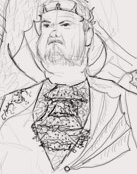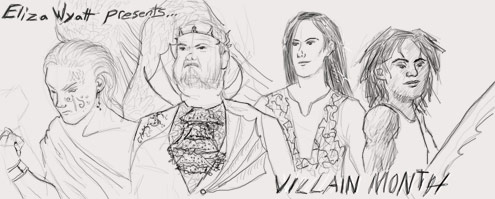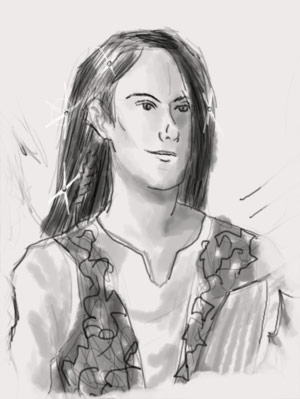 “The first and worst of all frauds is to cheat one’s self. All sin is easy after that.”
“The first and worst of all frauds is to cheat one’s self. All sin is easy after that.”
King Tarren II Kanichende de Marla
I’ve always had problems with King Kanichende– he makes threats that sometimes he doesn’t keep for some reason, and his drive wavers and falters. I’m not sure if this is a fault on his part, or if I’m trying to keep my protagonists from being killed immediately (short book). I’ll start with what I do know about him.
Tarren adored his little sister.
Arielii Kanichende, the golden princess of Vastii. Beautiful, graceful, popular Arielii, full of dry wit and wry humor. Arielii could make a fool out of anyone, build up or destroy reputations. Arielii had wings, and was so thin that she could glide across the chasm their city was built around and make a show out of it. Tarren had been against her marriage to Chyril Jadis to begin with; he wanted Arielii to stay in the royal city and her marble palaces, not travel over the god-forsaken surface to marry. Arielii left too eagerly, too happy for a chance to see new things, though Tarren would have done anything to bar her (and tried, unsuccessfully– he still thinks that someone had told Arielii of his plans to stop her).
Arielii went to Renideo to her new husband, who lived in a flatter, less glamorous manor amid a series of underground lakes. She wrote to Tarren on occasion, always promising to return to see him, and told him that while the buildings were less than impressive, she loved the swans, which lived across the cavern with the lakes between them and the humans. They were white, but where they lived the algae glowed, and it cast a blue light on their plumage. Blue swans beating their wings against the water, flying over the city, with plenty of room for her to join them. When Tarren became the king, he had his inside men within Renideo start to give him regular reports on his sister. She didn’t seem to be missing him. She had a daughter, a half-wit, which she let the servants raise in hopes of a better child. Several years later she was pregnant again, and that was the last that Tarren heard of her directly.
Tarren’s inside man detailed the facts of her death thus: Arielii had survived the labor and was doing well, while her son had been stillborn. Her husband and half-wit daughter went into the room and were left alone. When they left the room again, Arielii was dead, and the retarded girl stopped speaking entirely. She didn’t say anything again until she was almost ten. Chyril married again, and his next wife also did not live for long. By the time the territory directly south of Chyril’s holding turned hostile, Chyril was on his fourth wife and kept a private harem, but no other children. Wyrren Jadis, Arielii’s daughter, was nearly twenty. Despite the obvious mental ability retardation the girl was reputed to have written a long, detailed thesis on a highly dangerous form of magic, probably ghostwritten by one of her father’s practitioners for the sake of her reputation.
The rebellion of Aiche to the south was almost convenient. Tarren set his inside man to stage the presence of his assassins in Chyril’s castle and demanded his niece pay him a visit– she could have three maids, but no guards of her own, and would be returned after the rebellion, provided that Chyril did not join or come to the aid of Aiche. Chryil agreed, and sent his only child.
Wyrren Jadis de Renideo had her mother’s golden hair, but her face was stiff, immobile. Her eyes didn’t open more than halfway, her mouth hung slightly open, and she never moved her eyes– she turned her entire head when she wanted to look at something, a stiff, ugly mockery of his sister’s features. She came with three maids, one pretty, the other two as ugly as herself, one fat, the other scarred and sallow. She also came with a slave bound in gold, a serious looking red-haired man who wore a sword at each hip and moved like a bodyguard. Her father had set her up with a man as a ‘possession’, to claim him as property to give his daughter her own guard, Tarren was sure. Despite the breech in terms, Tarren was satisfied enough that the girl could be tricked into revealing the details of his sister’s murder.

